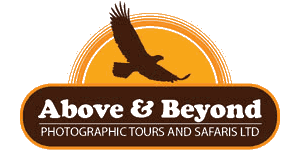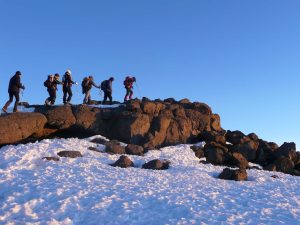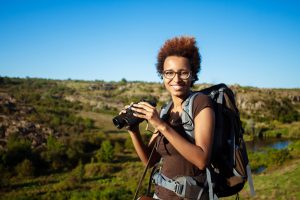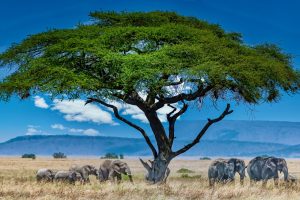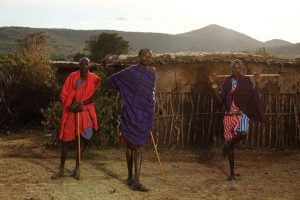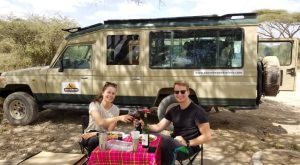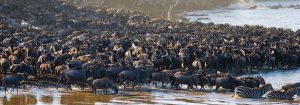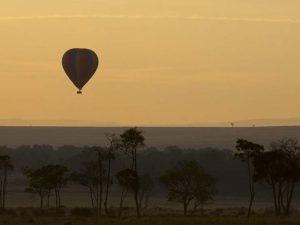Tanzania is one of the most beautiful countries in East Africa and the world. It comprises several national parks known to have the best safari in Tanzania.
For instance, Serengeti National Park and Ngorongoro Crater are the best hotspots for wildlife action, perfect for walking safaris and game drives. With that being said, the most common question that all safari-goers want to know is, “How much does a Tanzania Safari cost?”
When planning a safari in Tanzania, you will want to consider a few essential things, such as your dream safari itinerary, the duration of your stay in Tanzania, and most importantly, the budget you can afford for the time in Tanzania. While safari prices can be steep, there are options to suit various budgets, from luxury excursions to more affordable adventures.
We will dive into mid-range Tanzania safari costs, ensuring you understand what to expect financially. And remember, a Tanzania safari does not have to be unreasonably expensive; stay tuned for insights on budget safaris later in this guide.
But for now, we want to help you figure out how much your dream safari will cost and what you should consider when creating a realistic budget for the daily cost in Tanzania. One important thing to note about African safaris is that the longer you stay and play, the more you see and do on your adventure. Now, let’s get to it!
How much does a Tanzania safari cost?
Overall, the cost of your dream safari depends on the following factors:
- Time of Year you Visit Tanzania: Dry Season vs Wet Seasons
- Type of Safari Package You Choose: Private Tour vs Small Group Tour
- Level of Accommodation and Level of Luxury
- Number of National Parks You Visit
- Duration of Your Safari
- Number of Travelers in Your Safari vehicle
- Number of Add-On Safari Activities You Include In Your Tour
- Mode of Transport You Choose In Tanzania:
- Tips To Give on A Safari
- Choice of Flight + Visa Choice
- Travel Insurance Package
- Safari Company Choice
When you book a tour through Above & Beyond Photographic Tours and Safaris, you ensure that just about every one of these costs are taken care of.
For a 7 day safari, you should look to budget the following:
Safari With Basic Accommodation: [$2600 -$2800]
Safari With Comfort Accommodation: [$2800 – $3150]
Safari With Comfort+ Accommodation: [$2800 – $3750]
Safari With Luxury Accommodation: [$3700-$5000]
7 Days safari
These costs are averages that are based on many contributing factors. Each section of this blog breaks down these expenses and what you should expect.
The time of year you visit Tanzania: Dry season vs wet seasons
In Tanzania, four seasons affect the price of safaris. This is because each season brings in a different number of people, and when it’s busy in Tanzania, accommodation prices are high, and it is recommended to book at least eight months in advance.
Peak seasons (most expensive): January, February, June, July, August, September, October, 16 December – 31 December
January to February is known as the green season in Tanzania. During this time, baby animals are running around, and the landscapes are lush green due to the end of the short rain season having passed.
The dry season in Tanzania occurs from June through to October. During these months, the crowds are at their highest, and accommodation prices are at their peak. The weather is usually cool and dry, providing perfect conditions for all safaris.
The last half of December is the end of the short rainy season. Prices peak again due to the Christmas holiday and the massive influx of travellers worldwide. This is the most festive time of the year, so why not spend Christmas surrounded by the most surreal wildlife on the planet?
High seasons (moderately expensive): March, November – 15 December
The green season stretches into March, and crowds begin to disperse around this time, so accommodation prices drop. The weather is usually hot with the occasional rainfall and offers bird lovers pristine conditions for birdwatching.
Then, from November to the middle of December marks the opening of the short rainy season, where crowds begin to flock in before Christmas. The prices are still relatively high here but lower than in peak season.
Low season (least expensive): April – May
If you’re planning a budget safari to Tanzania, these months are for you. These months are the long rainy season, and they offer the lowest safari costs of the year. Accommodation doesn’t get cheaper than in these months. This period is the long rainy season in Tanzania, where the crowds are at their lowest, and the land is pristine, quiet, and beautiful.
Type of safari package you choose: Private tours or small group tours
To calculate how much it will cost each person per day, you’ll need to decide on a safari package and whether or not you want to go on a private tour or a safari with another small group of people.
Suppose you are coming on a safari with a group of less than four and want to reduce your overall safari expense. In that case, we recommend joining a small group of other tourists to split the overall costs of the vehicle and guide, one of the most expensive factors.
Otherwise, if you’re coming in a group with more than four people, consider going on a private safari to get all the personal attention from your guide. This way, you can bond and create a tight-knit experience with your group. Above & Beyond Photographic Tours and Safaris has a broad range of safari packages available. Let’s take a look at one of our favourite Above & Beyond Photographic Tours and Safaris:
Tanzania classic Safaris : 7 days [$2500]
Day 1 – Arrival Day: You will arrive at Kilimanjaro Airport and be welcomed by one of our experienced safari guides. Your guide will escort you to Arusha and to your chosen hotel.
Day 2 – Arusha City To Tarangire National Park: Your guide will collect you at your hotel. Then, heading South, you will arrive at the stunning Tarangire National Park. You will arrive at your lodge by noon, just in time for lunch. You will spend the afternoon amongst the wildlife and then retire to the comfort of your lodge for an evening meal and much-needed rest.
Day 3 -Tarangire To Lake Manyara National Park: After breakfast, we depart for Tarangire. The drive to Lake Manyara is not long. After your game drive in Lake Manyara, it’s time to head back to your lodge for some relaxation and a delicious dinner.
Day 4: Lake Manyara To Serengeti National Park: Our journey will take us West and then North, to our exciting Serengeti. By the afternoon, you may feel exhausted, yet exhilarated from all you have seen on in Serengeti. After an extensive wildlife experience, it will be time to head back to your chosen accommodation.
Day 5 – Serengeti National Park: You will start the day with a morning game drive in Serengeti National Park. Here, you will experience stunning scenery, ever-changing light, and abundant wildlife. At the end of the afternoon, you will return to the comfort of the lodge for dinner and some much-needed rest.
Day 6 – Serengeti National Park to Ngorongoro Crater: With an early start to the day, you will head off on a morning game drive. Then, it will be time to drive eastwards to visit another spectacular setting for Tanzania’s wildlife, the famous Ngorongoro Conservation Area. On arrival, you will settle in at a lodge while a tasty, hot dinner is prepared for you.
Day 7 – Ngorongoro Crater to The Airport: This is your departure day, but before you go, there will be plenty of time to enjoy another early morning game drive before your thoughts turn to home. Ngorongoro Crater is often referred to as a wonder of the world and your early morning game drive shows you why.
Of course, you may want to craft your own safari package, in which case we can help you plan and organize your dream safari. Our team of safari professionals are experts when it comes to planning the best itinerary for your Tanzanian safari. Contact us today to start planning your dream adventure!
Level of accommodation
The type of accommodation you choose is a significant factor in the overall expense of your safari. Each price is an average based on the season and is given at a nightly rate for two people sharing. In other words, you will split the cost per night if you come as two people.
There are four types of accommodation styles, each more expensive than the last:
Basic accommodation style: [$35]
This accommodation style is best for those on a tight budget. You will be camping amongst the trees in tents on a mattress with limited facilities.
Comfort accommodation style [$200 – $300]
This is the most loved accommodation style among safari-goers. When you choose comfort as your accommodation style, you can expect to feel immersed in an African safari whilst relaxing in total comfort.
While still in a tent, you will have a beautiful, comfortable bed with convenient lights and hot water. This is true glamping.
Comfort plus accommodation style [$210 – $400]
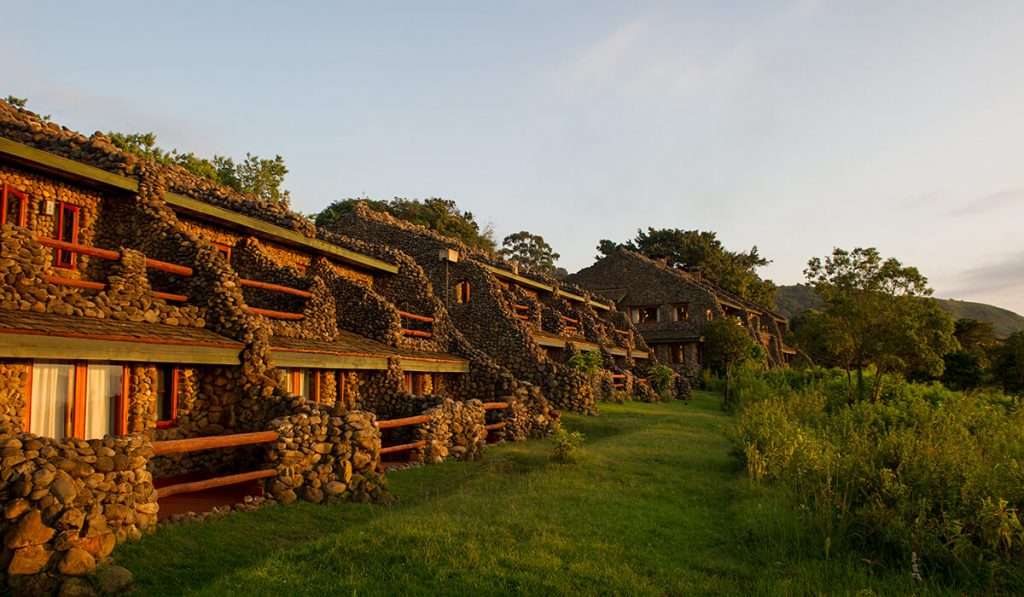
If you’re not a tent lover, this is your accommodation style. We have massive, beautiful lodges providing complete shelter from the environment and platform tents raised above the ground.
Luxury accommodation style [$370 – $650]

If travelling in style is your thing, this is your accommodation style. Think Five-Star hotels with the chance of swimming pools, exquisite catering services, and much more. You can expect to be surrounded by marvellous interiors, furniture, and ample amenities, including wifi, throughout your entire adventure.
Above & Beyond Photographic Tours and Safaris will provide everything you need for your adventure regardless of your accommodation style. Regardless of your accommodation style, we will care for you from the beginning to the end of your adventure.
Number of national parks you visit
Every national park you visit in Tanzania has its own entry fee and day rate. You will need to pay for your chef and driver, too. Here’s a breakdown of the daily fees for some of the most famous national parks:
| Season: | High | Low |
| Arusha National Park | $59 | $53 |
| Lake Manyara National Park | $59 | $53 |
| Kilimanjaro National Park | $83 | $83 |
| Ngorongoro Crater | $71 | $71 |
| Serengeti National Park – Central | $83 | $71 |
| Tarangire National Park | $59 | $53 |
This additional cost is worth the attention and support you receive from your chef and guide. Your driver will not only bring you to places of wondrous beauty but expand your connection to the places you visit, and your chef will make sure your adventure comes chore-free.
Duration of your safari
The more days you spend on a safari, the higher the price. However, Tanzania is massive and packed with so many optional activities. When you spend more time in Tanzania, you inevitably do and see more of this life-changing landscape.
How many national parks can I see on a safari?
On average, if you come for seven days, you can expect to experience four National Parks. Every additional day allows one more National Park to visit, but you must account for the time to get there.
Here’s a breakdown of the average safari cost for 6 and 7 days with ‘comfort style’ accommodation. We speak about the impact of sharing your safari vehicle in the next section.
| Type of Tour | No of Days on Safari | 1 Passenger | 2 Passenger | 3 Passenger | 4 Passenger |
| Private Tour | 6 Days Safari | $4052 | $2700 | $2394 | $2132 |
| Private Tour | 7 Days Safari | $4687 | $3125 | $2778 | $2474 |
Small Group Tour:
| Type of Tour | No of Days on Safari | 1 Passenger | 2 Passenger | 3 Passenger | 4 Passenger |
| Group Tours | 6 Days Safari | $2510 | $2317 | $2317 | $2317 |
| Group Tours | 7 Days Safari | $2727 | $2494 | $2494 | $2494 |
As you can see, when you split the cost of passengers in your safari vehicle, the overall cost decreases significantly. This is because you not only share the vehicle cost but the cost of transport and National Park fees for driver-guide.
Number of travelers in your safari vehicle
A safari vehicle can take up to 7 Passengers. The more people in the safari vehicle, the less each person pays. These are the costs that the passengers will share:
Number of add-on safari activities you include in your tour
You can add extra activities to your safari, each at cost.
Hot air balloon safaris
One of the most popular activities in Tanzania is going on a hot air balloon safari over Serengeti. The experience is unfathomable as you ascend higher into the sky to witness the sunrise over the beautiful land.
Summit mount Kilimanjaro
The mighty Kilimanjaro is no easy feat, but it is possible for everyone. If you like hiking and have a thrilling sense of adventure, we highly recommend attempting the highest freestanding mountain in the world.
Zanzibar: A holiday on pristine white sand beaches
Fancy a beach holiday? A Zanzibar beach will leave you dreaming about turquoise waters for the rest of your life. This is undoubtedly a must-do if you’re coming to Tanzania to relax. We offer plenty of safari packages around Zanzibar and its surrounding coral reefs.
Mode of transport you choose in Tanzania:
While in Tanzania, you will want to see as much of the abundant wildlife as majestic landscapes as possible. It is undoubtedly feasible to drive everywhere, but it will take your precious safari time away.
Therefore, if your budget allows it, consider taking domestic flights between the national parks and lodges to reduce travel time. This will enable you to see more of Tanzania, creating unforgettable memories. Therefore, overall, the mode of transport you choose will affect your tour cost.
Tips to give on a safari
Knowing who would appreciate a tip on a safari is essential, as many people are working to make your adventure as enjoyable as possible. They work endlessly all day, and a small tip can go a long way for them. Consider tipping the following workers on a safari:
Driver Guide An exciting and successful safari depends mainly on your Driver Guide. For this reason, we suggest tipping them separately to ensure they get a fair tip.
Mountain Guide/Porters/Mountain Chef An exciting and successful mountain climb depends mainly on your mountain crew, which consists of the mountain guide, mountain porters, summit porters, mountain chef, and transfer driver. We suggest tipping them separately to ensure they get a fair tip.
Hotel staff: Many people work behind the scenes to ensure your trip succeeds, including the chefs, the kitchen team, and the housekeeping staff. To include all these ‘back of house’ people, many lodges or camps have a ‘general staff tip box.’ The proceeds are usually divided equally between the staff.
How much to tip on a safari:
Private Safari or Group Safari
Driver Guide: $25 per day / per couple
Airport Transfer Guide: $20 per Transfer / per couple
Mountain: Private/Group Climb
Mountain Guide: $25 per day / per Group
Mountain Chef: $15 per day / Per Chef / Per Group
Mountain Porter: $8 per day / Per Porter / Per Group
Summit Porter: $8 per day / Per Summit Porter / Per Group
Transfer Driver: $20 per Transfer / per group
Hotel Staff:
Tip Box: $20 per stay / per couple
The amounts we suggest here are rough guidelines based on the average tip each safari-goer usually gives. Tipping is a personal gesture of generosity, so there is no obligation to tip.
Choice of international flights + visa choice
International flights will usually be the biggest overall expense for your adventure. We recommend planning your flight to scout for the cheapest available flights.
Before booking your preferred airline and class, you must apply for a tourist visa from the Tanzania embassy, which can be multiple entries ($100) or single entry ($50). If you’re a US citizen, you must apply for multiple entries.
Travel insurance package
Travel insurance is vital for any adventure abroad. Unfortunately, travel insurance companies provide quotes based on an individual’s circumstances, such as the duration of the trip, the activities planned on the trip, etc. While travel insurance increases a safari’s overall cost, it is necessary.
We at Above & Beyond Photographic Tours and Safaris advise our clients to take out an extensive insurance package that includes ‘cancellation for any reason’. Your insurance package should cover medical repatriation and trip interruption as a minimum requirement.
Taking out an insurance package before you book your safari and international flights is highly recommended. Comprehensive cover is essential, and you should ensure you have adequate cover.
Above & Beyond Photographic Tours & Safaris can recommend Travel Guard, which offers Deluxe, Preferred, or Essential policies for climbers from the USA. These cover high-altitude trekking, trip cancellation, interruption, and delay. They also cover lost, stolen, damaged, and delayed baggage, medical expenses, and emergency medical evacuation.
For visitors coming from certain other countries (including the United Kingdom, New Zealand, Australia, Japan, and others), we can recommend policies offered by World Nomads.
Kilimanjaro requires that all climbers have travel insurance to climb. Please note that, upon request, climbers must be able to provide proof of insurance to our staff. Those who cannot prove they have sufficient travel insurance will only be allowed to climb with an exception.
Travel insurance is also vital for safaris. It would be horrific to go home with broken photography equipment or, even worse, broken bones.
Budget safaris in Tanzania: Our recommendations for your budget Tanzania safari
We recommend that you get in contact with our team of safari specialists to receive guidelines for the perfect budget safari. You must provide the month and year you want to travel and your safari budget. Once they receive this information from you, they will help you find the appropriate accommodation and advise you on a realistic length and set of itineraries for your budget safari.
The primary advice we can leave with you is this: if you want your safari to be cheaper, come with a group or join another group. It will reduce expenses and make your adventure something you can share.
Conclusion
A safari in Tanzania is a priceless, lifetime experience. Your safari cost will come down to several factors, as listed above.
The time of year you visit Tanzania is a massive deciding factor in the average cost of a safari. You’ll need to select a safari package and a list of itineraries, each costing its amount.
You’ll need to decide how long your safari is going to be, as well as your accommodation style. If you choose luxury lodges as your standard of accommodation, you will be paying far more than a basic safari accommodation.
You can share many expenses if you come with a group or join another group. You’ll need to consider whether or not you want to add any additional safari activities and then consider the tips you want to give your guides.
Finally, consider the cost of an international flight, take out a comprehensive travel insurance package, and book through a reliable tour operator.
Most of your costs are covered when you book through Above & Beyond Photographic Tours and Safaris and select one of our famous safari packages. Contact our experts today if you would like to craft your safari package.
